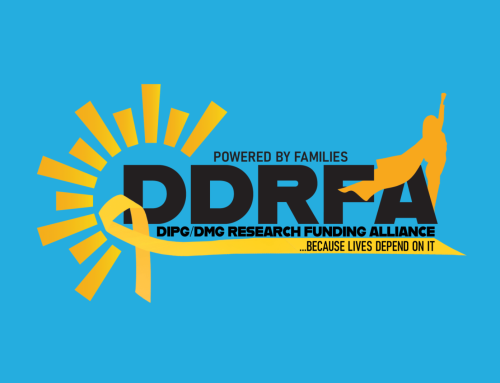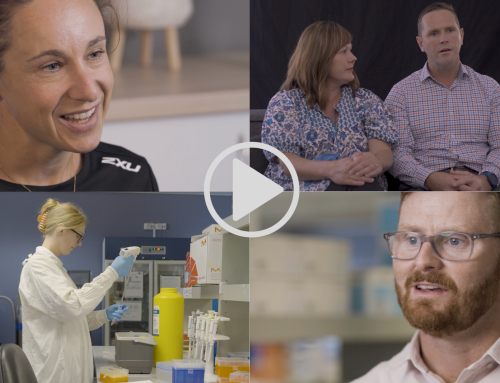“ONC201 in combination with paxalisib for the treatment of H3K27-altered diffuse midline glioma”
The Cancer Signalling Research Group, led by Prof Matt Dun at the University of Newcastle have published their findings revealing the mechanisms controlling response to the promising oral therapy ‘ONC201’ in the journal ‘Cancer Research’. ONC201 is currently being investigated in 12 clinical trials worldwide, across many cancer types, the one of great interest to the RUN DIPG community being ‘PNOC022’ – ‘Combination Therapy for the Treatment of Diffuse Midline Glioma’. Opening in Australia in 2022, the preclinical data generated by the Dun Lab following Josie Dun’s diagnosis in 2018 formed the main body of evidence supporting the use of the experimental therapies for DIPG/DMG patients.
Using cell lines derived from DMG patient tumour samples (each with different genetic features), the Cancer Signalling Research Group (CSRG) assessed how each tumour type responded to ONC201. Noticing a subset of samples on which ONC201 had little or no effect, Prof Dun and CSRG set about evaluating the mutations/gene alterations of the resistant samples to understand the cause.
The Dun Lab found that some genetic features were predictive of response to ONC201, while also corroborating a molecular target of ONC201 as a ‘ClpP agonist’, affecting the cells’ metabolism machinery – the mitochondria. Using ‘high-resolution quantitative proteomic profiling’ the group evaluated the proteins present within ONC201-treated samples, finding disruption to proteins associated with the tumour cells’ energy systems. Importantly, in response to this disturbance in metabolism, proteins controlling the ‘PI3K’ cell signalling pathway (promoting cell growth) were found to be upregulated, identifying a mechanism by which DMG cells can continue to grow despite ONC201’s anti-cancer effect.
Finding that ONC201 treatment resulted in upregulation of the PI3K signalling pathway was surprising, particularly as Prof Dun and the team were concurrently evaluating an additional drug in DMG – ‘paxalisib’, which happened to be a ‘PI3K inhibitor’ i.e. combats the mechanism identified as controlling resistance to ONC201! At the time, paxalisib was already in clinical trials as a monotherapy. Prof Dun and the team used their DMG models to test the effect of the drugs in combination (ONC201 + paxalisib), finding them beneficial and safe, prompting the approach be progressed to clinical trial evaluation.
As is reported in the paper, ONC201 appears to be extending survival of patients with DMG – included in the paper are case studies outlining the response of children on the combination, including a reduction in tumour size. As more data becomes available (through PNOC022), the extent of benefit will be clearer.
Specialist techniques of the Dun Lab have revealed how two emerging therapies exert their anti-cancer effect, particularly, the mechanisms controlling whether a patient responds, and the benefits of using them in combination. Prof Dun and CSRG are continuing to study these drugs in lab-based DMG models to gain a greater understanding of how to improve the number of people who respond, or the length/robustness of response a patient might experience.
To move bench side findings to clinical trial within 5 years is an exceptional achievement in discovery science – made possible thanks to the unwavering support of RUN DIPG and their community, and for that Prof Dun and the University of Newcastle team are immensely thankful.
The journal article can be read in full, here.
Image Credit: Somersault 1824





